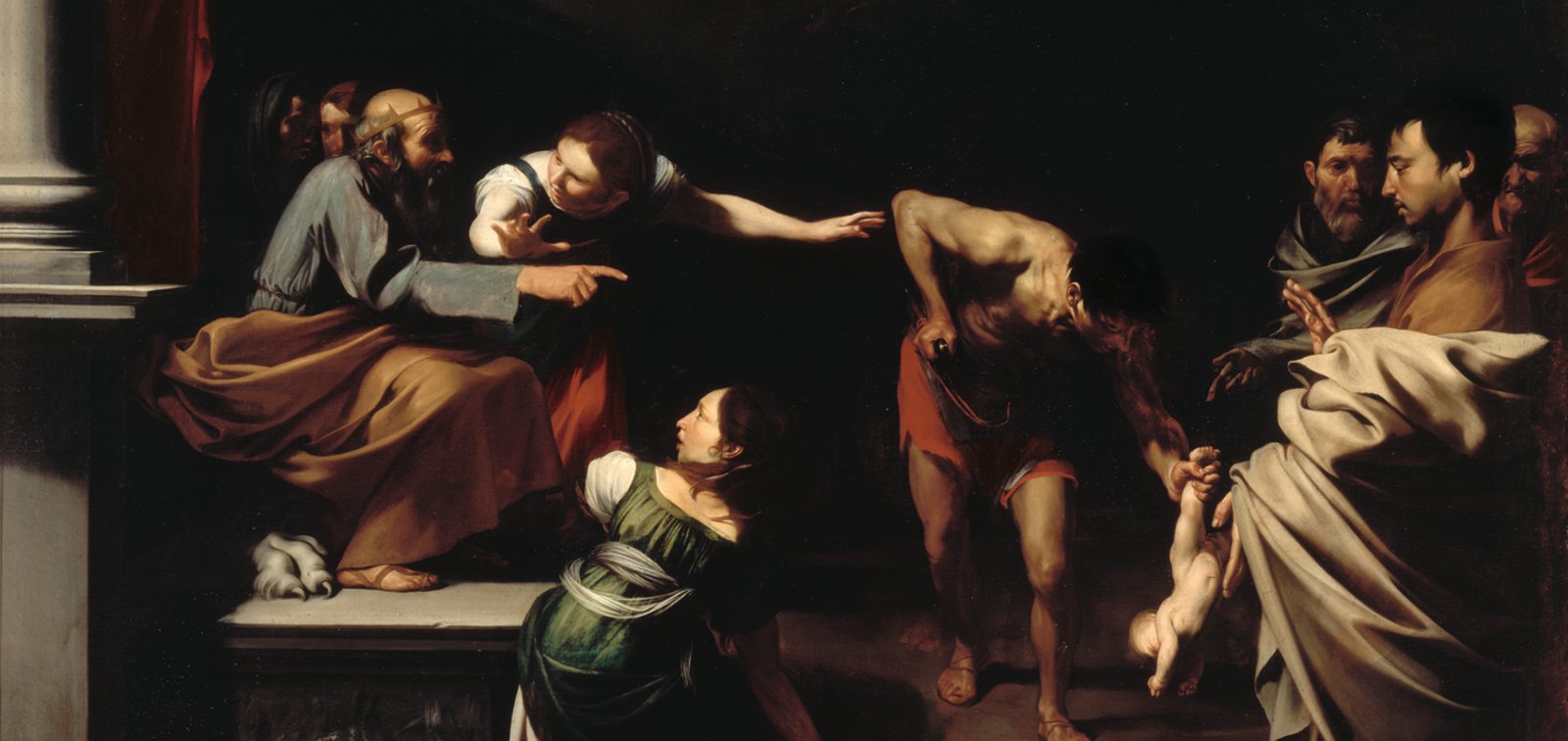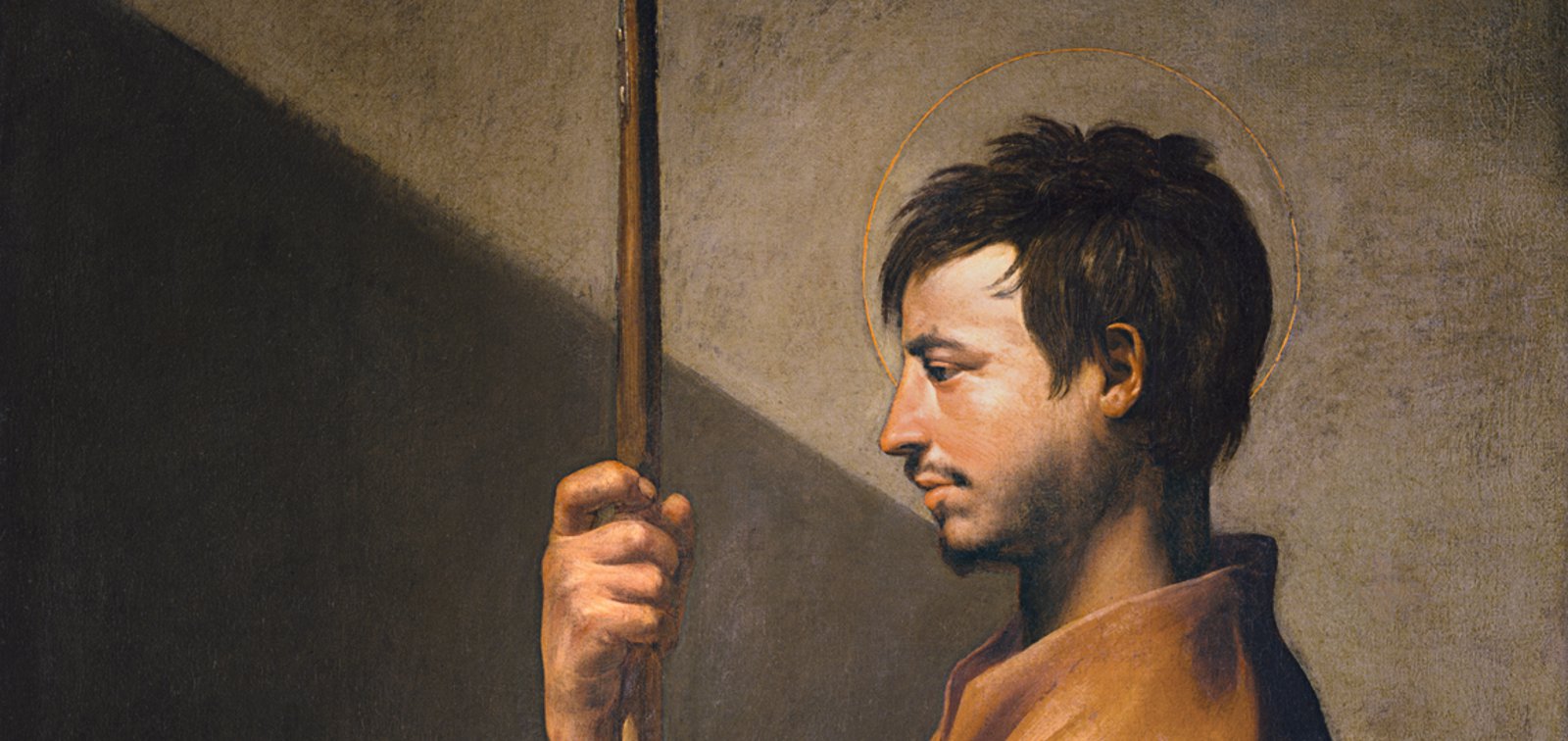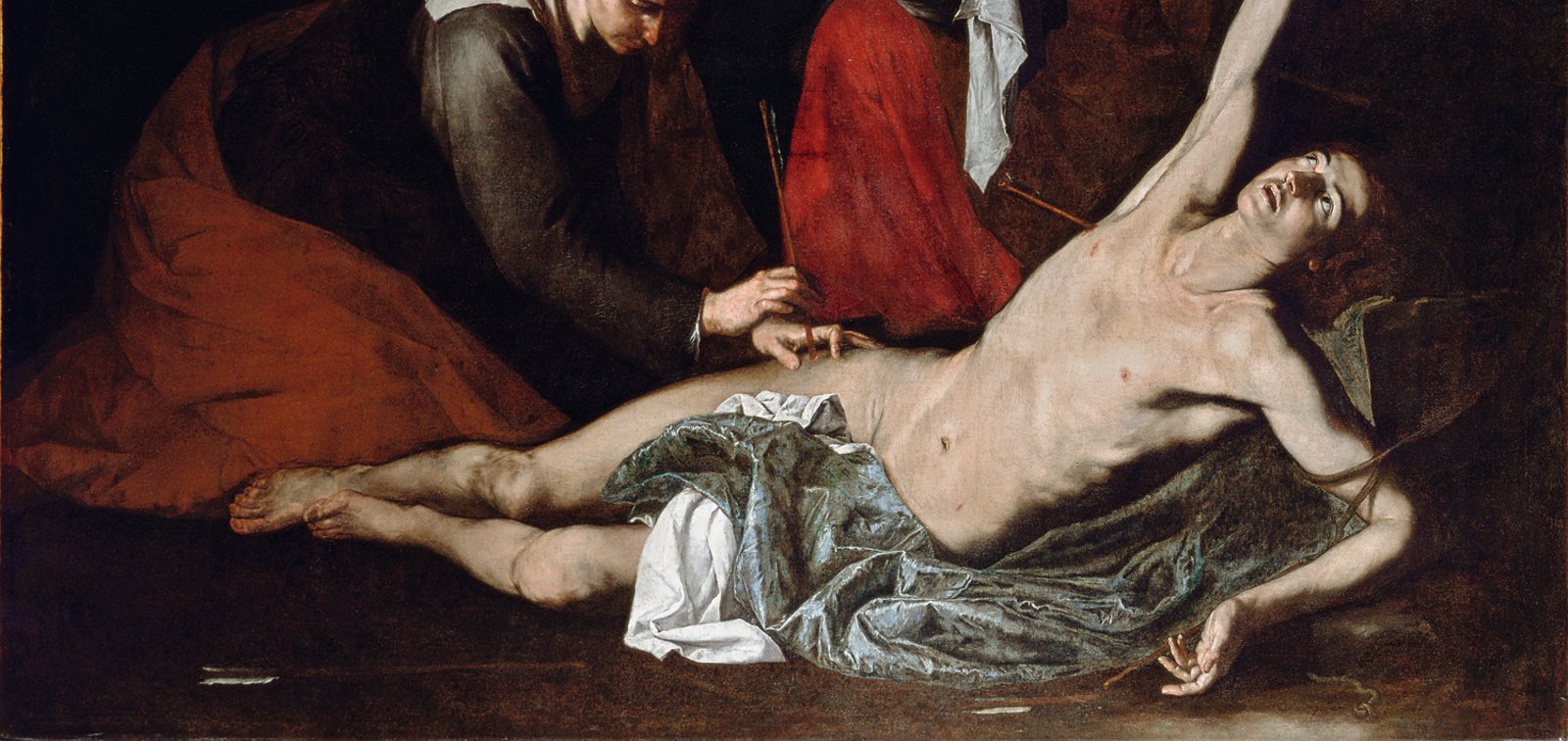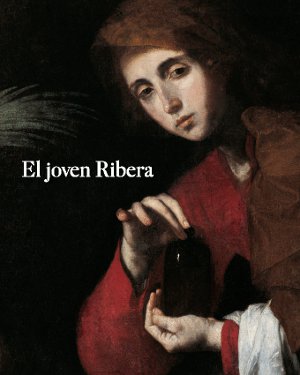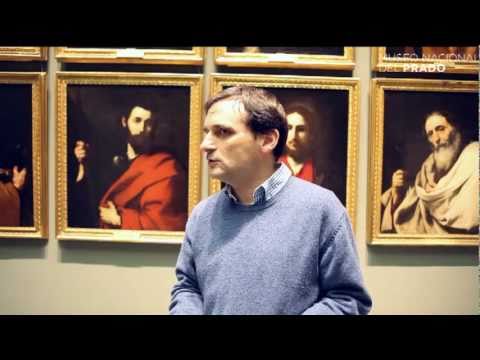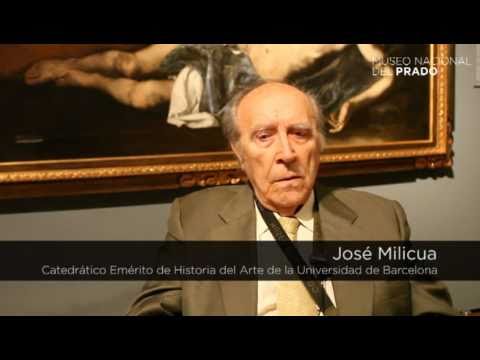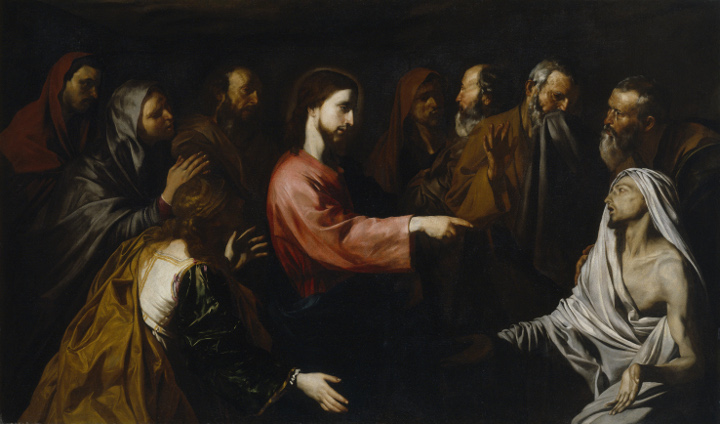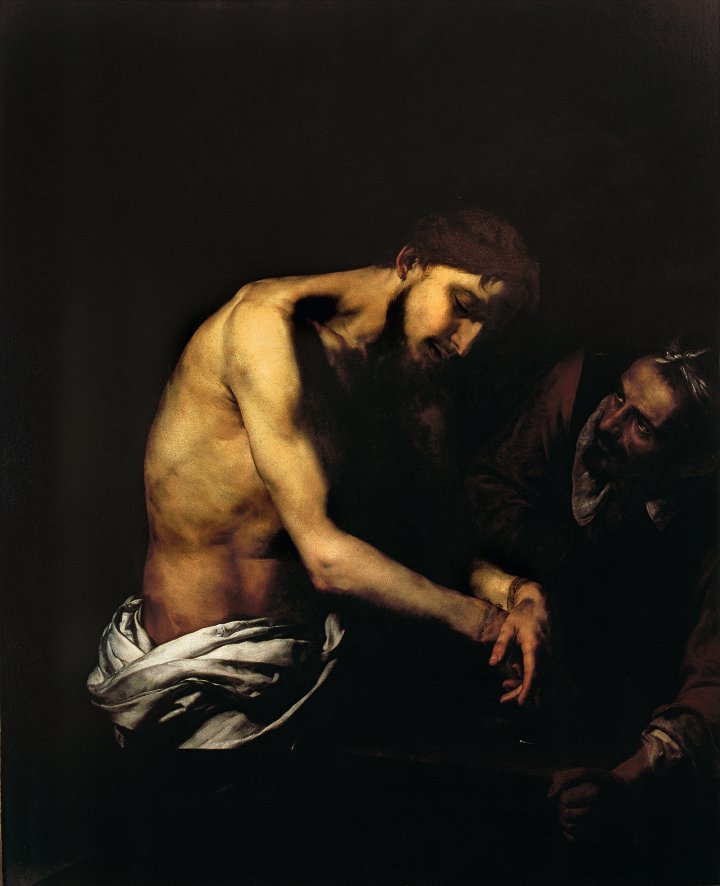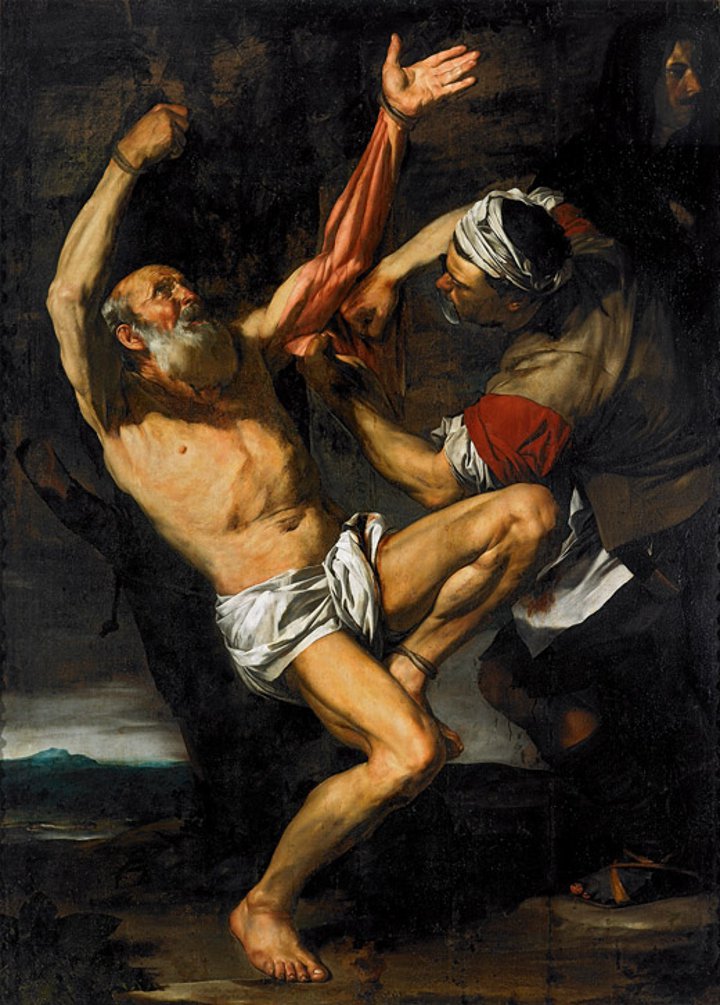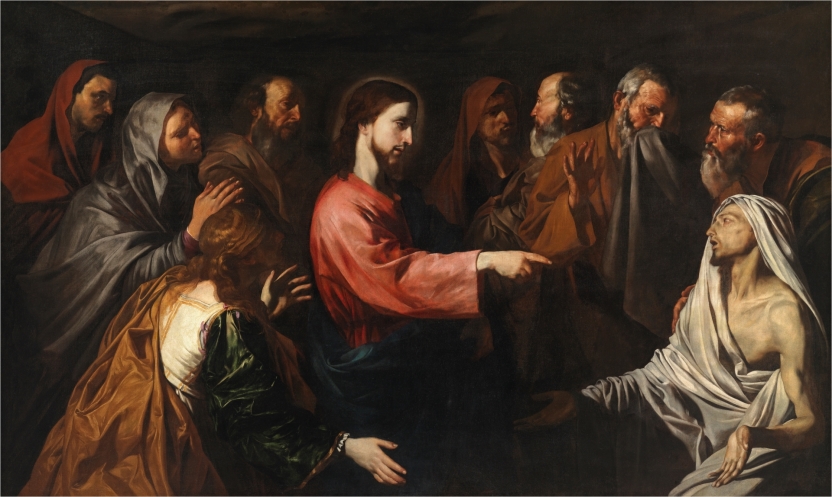Following this section, the exhibition includes another unique group of works under the heading “From Rome to Naples: half-length figures”. During his years in Rome and his early period in Naples, Ribera also depicted numerous single figures or pairs, which are generally depicted half-length and in front of a table. Most of them are New Testament saints. In works of this type the artist deployed his precise, effective style to depict realistic human types and compositions in which the figure is located in the foreground and occupies almost all the pictorial space. The result is a series of powerful, rigorous images that would be the starting-point for future innovations, making Ribera’s artistic vocabulary and subject-matter among the most unique and distinctive of its day. During this period he began to depict philosophers, such as Origen and Democritus, using pictorial formats similar to those of his saints, although these early versions do not involve the association between poverty and philosophy to be found in later paintings of such figures.

